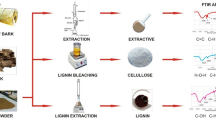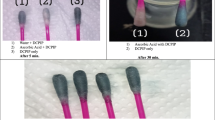Summary
The mechanism of the inhibitory effect of 2, 3-butanedione 2-monoxime (BDM) on contraction of frog skeletal muscles was studied using skinned fibres and aequorin-injected intact fibres. The tension development of skinned fibres directly activated with calcium was strongly inhibited by BDM. This agent also had effects on the sarcoplasmic reticulum in the skinned preparations, suppressing the calcium pump function and enhancing the activity of the ‘calcium-induced calcium release’ mechanism. In electrically stimulated intact fibres, although BDM slightly suppressed the elevation of the intracellular calcium ion concentration, this effect was so weak that it would not explain the strong inhibitory effect of the agent on the tension development by the intact fibres. It was concluded that the tension reducing effect of BDM on intact fibres was due mainly to its direct action on the contractile system. The mode of this action of BDM was further examined with skinned fibres in view of its effects on the maximum shortening speed and isometric tension in low MgATP environments.
Similar content being viewed by others
References
Allen, D. G. &Kurihara, S. (1982) The effects of muscle length on intracellular calcium transients in mammalian cardiac muscle.J. Physiol. 327, 79–94.
Baylor, S. M., Chandler, W. K. &Marshall, M. W. (1983) Sarcoplasmic reticulum calcium release in frog skeletal muscle fibres estimated from arsenazo III calcium transients.J. Physiol. 344, 625–66.
Blanchard, E. M., Mulieri, L. A. &Alpert, N. R. (1984) The effect of 2,3-butanedione monoxime (BDM) on the relation between initial heat and mechanical output of rabbit papillary muscle.Biophys. J. 45, 48a.
Blinks, J. R., Wier, W. G., Hess, P. &Prendergast, F. G. (1982) Measurement of Ca2+ concentration in living cells.Progr. Biophys. molec. Biol. 40, 1–114.
Brocklehurst, L. (1975) Dantrolene sodium and ‘skinned’ muscle fibres.Nature 254, 364.
Edman, K. A. P. (1979) The velocity of unloaded shortening and its relation to sarcomere length and isometric force in vertebrate muscle fibres.J. Physiol. 291, 143–59.
Endo, M. (1977) Calcium release from the sarcoplasmic reticulum.Physiol. Rev. 57, 71–108.
Endo, M. (1981) Mechanism of calcium-induced calcium release in the SR membrane. InThe Mechanism of Gated Calcium Transport across Biological Membranes (ed.Ohnishi, S. T. &Endo, M.) pp. 257–64. New York: Academic Press.
Endo, M., Tanaka, M. &Ogawa, Y. (1970) Calcium-induced release of calcium from the sarcoplasmic reticulum of skinned skeletal muscle fibres.Nature 228, 34–6.
Endo, M., Yagi, S., Ishizuka, T., Horiuti, K., Koga, Y. &Amaha, K. (1983) Changes in the Ca-induced Ca release machanism in the sarcoplasmic reticulum of the muscle from a patient with malignant hyperthermia.Biomed. Res. 4, 83–92.
Horiuti, K. (1986) Properties of the contractile system and sarcoplasmic reticulum of skinned slowXenopus muscle fibres.J. Physiol. 373, 1–23.
Huxley, A. F. (1957) Muscle structure and theories of contraction.Prog. Biophys. Biophys. Chem. 7, 255–318.
Ishizuka, T. &Endo, M. (1983) Effects of adenine on skinned fibers of Amphibian fast skeletal muscle.Proc. Jpn Acad. 59B, 93–6.
Kometani, K. (1985) The effect of 2,3-butanedione monoxime on the initial heat production of frog skeletal muscle.J. Physiol. Soc. Jpn 47, 522.
Moisescu, D. G. &Thieleczek, R. (1979) Sarcomere length effects on the Sr2+- and Ca2+-activated curves in skinned frog muscle fibres.Biochim. Biophys. Acta 546, 64–76.
Mulieri, L. A. &Alpert, N. R. (1984) Differential effects of 2,3-butanedione monoxime (BDM) on activation and contraction.Biophys. J. 45, 47a.
Reuben, J. P., Brandt, P. W., Berman, M. &Grundfest, H. (1971) Regulation of tension in the skinned crayfish muscle fiber. I. Contraction and relaxation in the absence of Ca (pCa > 9).J. Gen. Physiol. 57, 385–407.
Smith, R. M. &Martell, A. E. (1974–1982)Critical Stability Constants Volumes 1–5. New York: Plenum Press.
Author information
Authors and Affiliations
Rights and permissions
About this article
Cite this article
Horiuti, K., Higuchi, H., Umazume, Y. et al. Mechanism of action of 2, 3-butanedione 2-monoxime on contraction of frog skeletal muscle fibres. J Muscle Res Cell Motil 9, 156–164 (1988). https://doi.org/10.1007/BF01773737
Received:
Issue Date:
DOI: https://doi.org/10.1007/BF01773737




